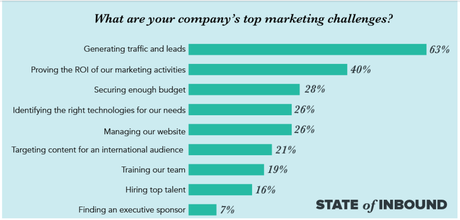SEO vs PPC
SEO - or search engine optimization - can help your content rank higher and longer. Organic content found through search engines is more likely to be accepted by the audience and trusted, more effective for local searches, and can increase your online presence for a longer time. On the other hand, PPC - or Pay-Per-Click - requires you to spend advertising money so that the content is presented to the audience.
What is SEO?
As you turn to your favorite search engine to find a new marketing abbreviation or where to buy a machine, so are your consumers. By investing in SEO or search engine optimization, you increase the likelihood that your target audience will find you when they look for things related to your product or service.
What is PPC?
PPC, or pay-per-click, is a form of search engine marketing (SEM) where the advertiser pays the publisher (like Google or Facebook) every time they click on the ad. This model allows advertisers to pay only when consumers interact with their list - this means that you attract people who are interested in your offer.
SEO vs PPC statistics
PPC
1) 1. Top 3 paid ad slots receive 46% of the clicks on the page. According to Power Traffick, the top three links on the search engine results page (SERP) capture nearly half of all traffic for this keyword. This data supports the PPC method since it involves the purchase of advertising space at the top of the search results.
2) Businesses earn an average of $ 3 in revenue for every $ 1.60 they spend on AdWords. PPC is a relatively inexpensive way to experiment, and there is a high average return on investment for investments in paid search ads.
3) PPC ads can raise awareness by 80%. Despite ad blockers, PPC is still effective in expanding your brand reach and brand awareness.
SEO
1) One in ten blog posts is compound. This means that organic search increases their traffic over time, and as the number of visitors increases, the number of conversions increases. Historical content is an important part of SEO strategies and customer acquisition.

2) 88% of local business searches on a mobile device either call or visit a business within 24 hours. Local SEO has excellent SEO - the number of
local search queries increases by 900% in two years, and thanks to the optimization of content and web pages for the closest audience, organizations can see significant growth.
3) 36.2% of consumers recognize links that are paid ads but don’t click on them. Many search users cannot distinguish between paid ads and regular links - in fact, only half of search engines correctly identify ads. Despite this, consumers still prefer organic bonding over PPC.
Pay for traffic
Paying for traffic is the payment of the result based on the amount of organic website traffic. That is, how many unique visitors came to the site from the search during the reporting period. This period is almost always a month.
How it works
At the beginning of work Lendgenius with the contractor, site traffic is measured using this model. Subsequently, it is believed that any organic non-brand traffic that came above this point is the result of the work of the agency.
Next, the cost of each attracted visitor to the site is negotiated, which depends on the topic (product category), competition and seasonality. But this cost is always lower than the average cost per click in contextual advertising ceteris paribus.
At the end of the month, the one that was before the start of work with the agency is taken away from the total amount of organic traffic and the resulting number is multiplied by the visitor cost agreed at the beginning of the cooperation.
It is worth noting that, like in other models, agencies set a minimum fixed rate - that is, the amount of the subscription fee that the client must pay in any case, regardless of the results. Thus, the agency insures itself against the risk of falling into a significant minus and not paying a salary to a specialist.
Accordingly, although the client only pays for the result in the form of website visitors, he cannot pay less than the agreed amount, regardless of the result. Such a model may be relevant for sites with a large number of visitors, where a change in traffic is more likely to result from the work of the agency.
Underwater rocks
At first glance, the traffic payment scheme is extremely transparent and honest. In fact, a client buys traffic from an agency just as he would buy it in search engines through contextual advertising, only cheaper. It seems like ... But, of course, there are several nuances:
The site may change traffic depending on the trends of the topic.
There are growing or, conversely, falling niches. Just because a particular topic is gaining popularity, there is a lot of noise around it.
In the case of a growing topic, the agency receives a portion of the profit for something that does not affect it in any way - the growing popularity of the topic. In the case when the subject is “falling”, the agency is unlikely to agree to work on such a payment scheme;
Traffic quality.
The number of website visitors do not always reflect on the real indicators that business needs - the number of customers and profits.
You can try to lay down the conversion rate in the contract. But the conversion depends on many factors that the agency cannot directly influence, especially within the framework of the SEO service alone (for example website design, brand awareness, competitive prices or assortment).
If the agency goes to such conditions, then the business is not having the best of times and it really needs customers at all costs.
As a result, with such a scheme, it is highly likely that one of the parties (agency or client) will be in a weaker position. And win-win does not work. But from the “pay-per-result” schemes, in our opinion, this scheme is the most transparent.
Payment by position
This is a popular scheme that came from the very beginning of the time of search engines. Due to the fact that clients want top positions for certain key requests, agencies offer them something that they cannot guarantee.
But, of course, the client is not to blame. When we go to the doctor, he does not postpone the operation simply because the patient wants to be treated medically.
How it works
At the beginning of the work, the agency negotiates with the client a list of requests for which it will try to bring the client’s site to the top of the list. At the same time, the cost of finding a site at the top for a specific request varies depending on the position (usually in the top 10, top 5, top 3), the frequency of the request and the region of promotion.
The higher the frequency of the request - the more often visitors drive it into the search bar, the more competitors' websites are optimized for it and the more difficult it is to get it to the top. And therefore - more expensive.
After the conclusion of the contract, the agency daily “removes” the position of the client’s site according to approved requests and at the end of the month, the client is billed for those phrases that were in the search top. Naturally, separately for each search engine.
The formula is as follows:
The cost of finding a key phrase in the top 10 (-5, -3) * the number of days spent at the top for the reporting period.
That is, the customer is charged a contractual penalty for each day the key phrase is at the top of the search results. At the same time, most agencies, as well as in the case of the traffic payment scheme, designate the minimum monthly fee that the client must pay in any circumstances.
Underwater rocks
This payment scheme is the most controversial. Many agencies talk about guarantees to bring the site to the top of search results. At the same time, both Google and Yandex have long and officially announced that there are no guarantees of a position in the issuance, and there are so many factors influencing it that the search giants themselves do not give an unambiguous answer to the question “what should be done to be in the top?”.
Looking ahead, according to our analysis, “top guarantees” are provided by 26% of agencies in the Russian market.
There are other important points with this scheme of work:
The approval of the list of requests is a small war, which is repeated almost monthly (quarterly).
The reason is very trivial: the agency wants to promote queries that are easier to promote, and the client wants to be in the first places of issuance for the most competitive phrases in the subject.
Personalization of search results. It cannot be stated unequivocally that two different users will have the same sites in the search results. Even in one geographic location. In addition, the algorithms for desktop and mobile devices also work differently.
To achieve a quick exit of the query to the top of search results, agencies try to tricks and often play "on the verge of a foul." Too sharp increase in the reference mass, the increase in behavioral factors, the grid of sites is far from a complete list of techniques that are used to quickly achieve a “result”.
All these methods are well known to developers of search algorithms, so the site runs the risk of being sanctioned by search engines. But for those days that he was at the top, the client will still have to pay.
Search by advertising placements. Google and Yandex are constantly experimenting not only with search algorithms but also with the appearance of the main search page.
Output
It is almost impossible to identify a clear leader in such a confrontation since both methods are good in certain circumstances.
Need instant results? Set up your ad campaign and start getting conversions in the next 24 hours. Set up for the long-term development of your project? The best option would be search engine optimization.
The only thing to remember: in the absence of a clear understanding of the market and the main nuances of the setting, it will be more rational to turn to specialists for help. Otherwise, you risk spending a lot of money, but still not get the desired results.
Mónica Rodríguez is a writer, art historian, and editor at LendGenius. She specializes in Art History, Art Conservation, History, Literature, Finance, Tech, Wellness, and Travel. In her free time, she’s usually roaming the halls of the museum or the local bookstore surrounded by stacks of books.

